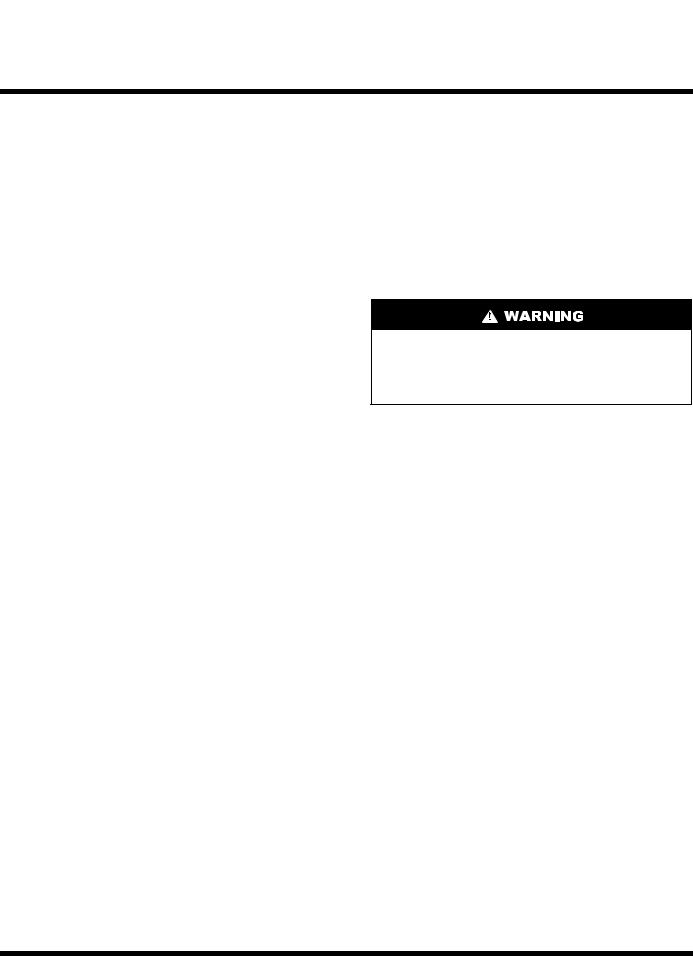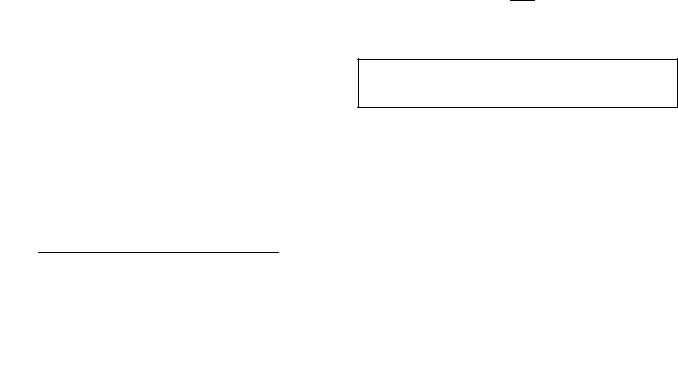Carrier 06D User Manual

06D,07D Compressors and Condensing Units
Installation, Start-Up and
Service Instructions
Hermetic, Water-Cooled
CONTENTS
Page
SAFETY CONSIDERATIONS . . . . . . . . . . . . . . . . . . . . . . 1
BEFORE INSTALLATION . . . . . . . . . . . . . . . . . . . . . . . . . 1
Check Shipment. . . . . . . . . . . . . . . . . . . . . . . . . . . . . . . . . . 1
Unit Location Considerations . . . . . . . . . . . . . . . . . . . . 1
INSTALLATION . . . . . . . . . . . . . . . . . . . . . . . . . . . . . . . . . 1-8
Mount Unit . . . . . . . . . . . . . . . . . . . . . . . . . . . . . . . . . . . . . . . 1
Piping Connections . . . . . . . . . . . . . . . . . . . . . . . . . . . . . . 1
Electrical Connections . . . . . . . . . . . . . . . . . . . . . . . . . . . 4
Limitations . . . . . . . . . . . . . . . . . . . . . . . . . . . . . . . . . . . . . . . 6
Refrigerant Charging. . . . . . . . . . . . . . . . . . . . . . . . . . . . . 8
INITIAL START-UP . . . . . . . . . . . . . . . . . . . . . . . . . . . . . . . . 8
To Start Compressor . . . . . . . . . . . . . . . . . . . . . . . . . . . . . 8
When working on the equipment, observe precautions in the literature, tags, stickers and labels attached to the equipment and any other safety precautions that apply. Follow all safety codes. Wear safety glasses and work gloves. Use care in handling, rigging and setting bulky equipment.
Electrical shock can cause personal injury and even death. Be sure power to equipment is shut off before installing or servicing this equipment. There may be more than one disconnect. Tag disconnect(s) to alert others not to turn power on until work is completed.
BEFORE INSTALLATION
CHECKING OPERATION. . . . . . . . . . . . . . . . . . . . . . . . .8,9
Oil Charge. . . . . . . . . . . . . . . . . . . . . . . . . . . . . . . . . . . . . . . . 8
High-Pressure Switch . . . . . . . . . . . . . . . . . . . . . . . . . . . . 8
Low-Pressure Switch. . . . . . . . . . . . . . . . . . . . . . . . . . . . . 8
Oil Pressure Switch . . . . . . . . . . . . . . . . . . . . . . . . . . . . . . 8
Time Guard® Control. . . . . . . . . . . . . . . . . . . . . . . . . . . . . 8
CAPACITY CONTROL . . . . . . . . . . . . . . . . . . . . . . . . . .9,10
Control Set Point . . . . . . . . . . . . . . . . . . . . . . . . . . . . . . . . . 9
To Regulate Control Set Point . . . . . . . . . . . . . . . . . . . . 9
Pressure Differential Adjustment. . . . . . . . . . . . . . . . . 9
Capacity Control Pressure . . . . . . . . . . . . . . . . . . . . . . 10
CONDENSER MAINTENANCE . . . . . . . . . . . . . . . . .10,11
SERVICE . . . . . . . . . . . . . . . . . . . . . . . . . . . . . . . . . . . . . 12-17
Service Notes . . . . . . . . . . . . . . . . . . . . . . . . . . . . . . . . . . . 12
Testing Oil Pump. . . . . . . . . . . . . . . . . . . . . . . . . . . . . . . . 12
Cylinder Heads. . . . . . . . . . . . . . . . . . . . . . . . . . . . . . . . . . 14
Service Replacement Compressors . . . . . . . . . . . . . 14
Suction and Discharge Valve Plate Assembly . . . 15
Cleaning Suction Strainer . . . . . . . . . . . . . . . . . . . . . . . 16
Motor Replacement . . . . . . . . . . . . . . . . . . . . . . . . . . . . . 16
Terminal Plate Assembly . . . . . . . . . . . . . . . . . . . . . . . . 16
Compressor Running Gear Removal . . . . . . . . . . . . 16
Compressor Running Gear Replacement. . . . . . . . 17
COMPRESSOR MOTOR BURNOUT . . . . . . . . . . . . . . 17
Clean-Up Procedure. . . . . . . . . . . . . . . . . . . . . . . . . . . . . 17
TROUBLESHOOTING. . . . . . . . . . . . . . . . . . . . . . . . . .18,19
SAFETY CONSIDERATIONS
Installing, starting up and servicing this equipment can be hazardous due to system pressures, electrical components and equipment location (roofs, elevated structures, etc.). Only trained, qualified installers and service mechanics should install, start up and service this equipment.
Check Shipment — File claim with shipping company if shipment is damaged or incomplete.
Unit Location Considerations — Locate unit on floor in a well-ventilated area. Position unit to allow sufficient space for refrigerant and water connections and to service compressor. Place unit so suction and discharge valves can be easily reached and oil level checked. Do not install condensing unit where temperature will fall below freezing.
Local water can cause excessive fouling or sealing of condenser tubes. If such conditions are anticipated, a water treatment analysis is recommended. Refer to Carrier System Design Manual, Part 5, for general water conditioning information.
Make provision in piping layout to drain and vent condenser if system is to be shut down in winter.
INSTALLATION
Mount Unit — Level unit and bolt firmly to foundation. Loosen compressor mounting bolts and remove shipping blocks from under compressor. Tighten all 4 bolts on compressor. Next, loosen each bolt until the flanged washer can be moved sideways with finger pressure.
NOTE: Be sure that compressor floats freely on mounting springs.
Piping Connections — Attach water supply and return lines to connections indicated on condenser unit (Fig. 1). Water leaving condenser should not be connected directly into sewer lines. Check local codes.
Attach refrigerant liquid and suction lines to condensing units (Fig. 1); suction and discharge to compressor unit (Fig. 2). When soldering or brazing piping to valves, disassemble valve or wrap it in a wet cloth to prevent heat damage. Allow flexibility in suction line so compressor suction valve may be moved aside for access to suction strainer.
Manufacturer reserves the right to discontinue, or change at any time, specifications or designs without notice and without incurring obligations.
Book |
2 |
2 |
4 |
4 |
PC 802 |
Catalog No. 530-608 |
Printed in U.S.A. |
Form 06/07D-3SI |
Pg 1 |
802 |
7-02 |
Replaces: 06/07D-2SI |
Tab |
1b |
2a |
2b |
3a |
|
|
|
|
|
|
|
|
|
|
|
|
|
|
|
|
|
|
|
|
|

DIMENSIONS (in.)
UNIT 07D |
WIDTH A |
A203 |
30 |
B205 |
30 |
A208 |
399/16 |
B210 |
519/16 |
B212 |
519/16 |
B215 |
6313/16 |
NOTES:
1. For standard service practices, such as troubleshooting and refrigerant charging, allow a minimum 2′-6″ clearance around the unit.
2. Recommended service space for condenser tube removal is one condenser length at either end.
3. For compressor removal, allow a minimum 3′ wide access aisle to and from the unit.
4. Local codes or jurisdiction may prevail for unit clearances.
WATER CONNECTIONS FOR 07DB215 UNIT ONLY.
Fig. 1 — 07D Condensing Unit Dimensions
2

NOTES:
1.For standard service practices, such as trouble-
shooting and refrigerant charging, allow a minimum 2′-6″ clearance around the unit.
2.For compressor removal, allow a minimum 3′ wide access aisle to and from the unit.
3.Local codes or jurisdiction may prevail for unit clearances.
Fig. 2 — 06D Compressor Unit Dimensions
3

Install a solenoid valve (field supplied) in liquid line directly before expansion valve. Solenoid valve is necessary for single pumpout control used on 06D, 07D units. Refrigerant filter drier and moisture indicator are shipped with 07D condensing units for field installation. Install in liquid line according to manufacturer’s instructions.
Relief valve located on top of condenser (07D units) will open to relieve excessive pressure, allowing refrigerant to escape. Most local codes require piping from safety device to outdoors.
Refer to Carrier System Design Manual, Part 3, for standard piping techniques.
COMPRESSOR UNITS — Connect highand low-pressure switch capillary tubes from control box to compressor. See Fig. 2.
Install discharge line muffler (accessory) in discharge line as close to compressor shutoff valve as possible.
Electrical Connections
UNBALANCED 3-PHASE SUPPLY VOLTAGE — Never operate a motor where a phase imbalance in supply voltage is greater than 2%. Use the following formula to determine the % voltage imbalance:
% Voltage Imbalance =
100 x
max voltage deviation from average voltage
average voltage
Example: Supply voltage is 230-3-60
AB = 236 volts
BC = 229 volts
AC = 234 volts
Average Voltage = |
236 + 229 + 234 |
= 233 volts |
|
3 |
|||
|
|
Determine maximum deviation from average voltage:
(AB) 236 – 233 = 3 volts (BC) 233 – 229 = 4 volts (AC) 234 – 233 = 1 volt
Maximum deviation is 4 volts. Determine % voltage imbalance:
% Voltage Imbalance =100 x 2334 = 1.7%
This amount of phase imbalance is satisfactory as it is below the maximum allowable of 2%.
IMPORTANT: If the supply voltage phase imbalance is more than 2%, contact your local electric utility company immediately.
ELECTRICAL DATA NOTES
1.All 06D and 07D units are across-the-line start.
2.Wire sizes are based on TW type copper wire. Maximum wire lengths based on data from Table 1 will result in a 1% voltage drop to compressor. Where up to 3% voltage drop is allowed, the run length can be increased to 3 times the length calculated from data in Table 1.
3.The 06D compressor unit electrical data shown in Table 1 does not apply for 06D compressors used as an integral part of other Carrier equipment. See proper installation book for electrical information.
WIRING — Power supply must correspond with unit nameplate electrical characteristics (units are internally wired at factory for nameplate voltage). Field wiring must comply with local and national codes.
Install a branch circuit fused disconnect of adequate size to handle starting current.
LINE POWER — Connect line power to the compressor contactor C. For example, connect L1 to terminal 11, L2 to terminal 12 and L3 to terminal 13. See Fig. 3.
Table 1 — Compressor Electrical Data
COMPRESSOR |
VOLTAGE |
|
|
|
|
MOTOR WINDING |
||
PART NUMBER |
HP |
MCC |
RLA |
LRA |
RESISTANCE |
|||
(3 Ph-60 Hz) |
||||||||
06D* |
|
|
|
|
(Ohms) |
|||
|
|
|
|
|
||||
|
808 |
575 |
|
7 |
5 |
28.4 |
5.0 |
|
|
208/230 |
3 |
17.4 |
12.4 |
71 |
0.78 |
||
M |
|
460 |
|
8.7 |
6.2 |
35.5 |
3.1 |
|
313 |
575 |
|
10.8 |
7.7 |
40 |
3.3 |
||
|
|
|||||||
|
208/230 |
5 |
27 |
19.3 |
100 |
0.5 |
||
|
|
460 |
|
13.5 |
9.6 |
50 |
2.1 |
|
|
818 |
575 |
|
17.6 |
12.6 |
64 |
2.6 |
|
|
208/230 |
6.5 |
44 |
31.4 |
160 |
0.42 |
||
|
|
460 |
|
22 |
15.7 |
80 |
1.7 |
|
|
825 |
575 |
|
22.2 |
15.9 |
79 |
2.0 |
|
|
208/230 |
7.5 |
55.5 |
39.6 |
198 |
0.31 |
||
A |
|
460 |
|
27.8 |
19.8 |
99 |
1.3 |
|
328 |
575 |
|
25 |
17.9 |
91 |
1.7 |
||
|
|
|||||||
|
208/230 |
10 |
62 |
44.3 |
228 |
0.26 |
||
|
|
460 |
|
31 |
22.1 |
114 |
1.0 |
|
|
537 |
575 |
|
32 |
22.9 |
96 |
1.2 |
|
|
208/230 |
15 |
89 |
63.6 |
266 |
0.18 |
||
|
|
460 |
|
40 |
28.6 |
120 |
0.72 |
|
LEGEND
LRA — Locked Rotor Amps
MCC — Maximum Continuous Current
RLA — Rated Load Amps
*Refer to physical data table to match compressor with correct compressor unit or water-cooled condensing unit.
NOTES:
1.RLA (rated load amps) value shown is: MCC 1.40 = RLA.
2.For minimum contactor sizing, use RLA value determined by: MCC 1.40 = RLA.
3.For wiring sizing, the RLA value can be determined by: MCC1.56 = RLA.
4.Compressor operating amps at any specific conditions can only be determined from a performance curve.
5.RLA values for 06D compressor protected by a calibrated circuit breaker will depend on must-trip value of circuit breaker.
6.Ohm values shown for resistance are approximate and shown for reference only. Motors from different vendors and motors of
different efficiencies can differ up to 15% from data shown.
7. Electrical data for compressor part numbers 06DR and 50 Hz models (not shown) are available from Carrier Sales Representative.
4

LEGEND
AUX |
— |
Auxiliary |
C |
— |
Compressor Contactor |
CH |
— |
Crankcase Heater |
CR |
— |
Control Relay |
DX |
— |
Direct Expansion |
EQUIP — |
Equipment |
|
FU |
— |
Fuse |
GND |
— |
Ground |
HPS |
— |
High-Pressure Switch |
IP |
— |
Internal Protector |
LLS |
— |
Liquid Line Solenoid Valve |
LPS |
— |
Low-Pressure Switch |
M3 |
— |
Cooling Tower Fan |
NEC |
— |
National Electrical Code |
OL |
— |
Overload |
OPS |
— |
Oil-Pressure Switch |
POR |
— |
Pumpout Relay |
SW |
— |
Start-Stop-Reset Switch |
NOTES:
1.Factory wiring is in compliance with NEC. Any field modifications or additions must be in compliance with all applicable codes. Use copper, copper-clad aluminum for field power supply only.
2.Field power supply wiring must be 75 C minimum.
3.Compressor thermally protected. Three-phase motors are protected against primary single-phasing condition.
4.Pilot duty control must be field supplied. Minimum contact rating must be 25 va.
5.60 Hz units have 120-volt control circuit. 50 Hz units have 230-volt control circuit. A separate source of supply at the correct voltage must be field supplied through a fused disconnect device
TB — Terminal Block
TM — Timer Motor
TR — Timer Relay
Terminal Block Connector
Unmarked Terminal
Marked Terminal
Factory Wiring
Field Control Wiring
To indicate common potential only; not to represent wiring.
Splice |
|
|
|
with a maximum |
rating of 15 A to TB2 connections |
|
|
L1 |
|||
(Hot Side) and |
L2 |
(Neutral). |
|
6.Open control circuit disconnect switch for servicing only. Disconnect must remain closed for crankcase heater to operate.
7.A transformer of the following rating may be field supplied for 60 Hz units: 350 va.
8.Transformer must be fused and grounded per applicable codes.
9.If any of the original wiring furnished must be replaced, it must be replaced with 90 C wire or its equivalent.
Fig. 3 — Unit Label Diagram — 06D,07D Units
5

Compressor Unit Connections — Extend power leads from control center (contactor terminals) to compressor terminal box and make connections as shown in Fig. 4.
Terminals 8 and 9 on motor terminal plate are for internal protector connections. As shown in Fig. 4, run a wire from terminal 9 to terminal 6 on TB2 in control center and a wire from terminal 1 on OL2 to terminal 2 on HPS in control center.
Run crankcase heater power wiring into control center. Connect leads to terminal 5 on pumpout relay and terminal 3 on terminal block TB2. See Fig. 5.
Affix power warning label supplied in the installer’s packet to fused disconnect which energizes crankcase heater (see unit label diagram).
LEGEND
HPS — High-Pressure Switch
OL — Overload Relay
TB — Terminal Block
Factory Wiring
Fig. 4 — Compressor Terminal Diagram
|
LEGEND |
|
|
C |
— Contactor, Compressor |
NEC |
— National Electrical Code |
CH |
— Crankcase Heater |
OL |
— Overload Relay |
CR |
— Control Relay |
OPS |
— Oil Pressure Switch |
FU |
— Fuse |
POR |
— Pumpout Relay |
GND |
— Ground Connection |
SW |
— Switch |
HPS |
— High-Pressure Switch |
TB |
— Terminal Block |
IP |
— Internal Protector |
TM |
— Timer Motor |
LPS |
— Low-Pressure Switch |
TR |
— Timer Relay |
NOTES:
1.Factory wiring is in compliance with NEC. Any field modifications or additions must be in compliance with all applicable codes. Use copper, copper-clad aluminum for field power supply only.
2.Field power supply wiring must be 75 C minimum.
3.Compressor thermally protected. Three-phase motors are protected against primary single-phasing condition.
4.Pilot duty control must be field supplied. Minimum contact rating must be 25 va.
5.60 Hz units have 120-volt control circuit. 50 Hz units have 230-volt control circuit. A separate source of supply at the correct voltage must be
field supplied thru a fused disconnect device with a max rating of 15 A to TB2 connections L1 (Hot Side) and L2 (Neutral).
6.Open control circuit disconnect switch for servicing only. Disconnect must remain closed for crankcase heater to operate.
7.A transformer of the following rating may be field supplied for 60 Hz units: 350 va.
8.Transformer must be fused and grounded per applicable codes.
9.If any of the original wiring furnished must be replaced, it must be replaced with 90 C wire or its equivalent.
CONTROL WIRING — Control circuit power is 115 volts, energized from an external source or from unit voltage through field-supplied transformer. Transformer size required is 350 va for 60 Hz units. External control power source must be supplied through a 15-amp fused disconnect. Connect control circuit power leads to terminal block TB2, terminals L1 and L2. Terminal L2 is neutral potential (ground).
Compressor Protection — The 06D and 07D units are factory wired for single-pumpout control. Field addition and wiring of line voltage remote control and liquid line solenoid valve is required. (See unit Fig. 3 and Fig. 6.) Remote control minimum contact rating must be 25 va. Solenoid valve must have a maximum load rating of 50 va holding; 200 va inrush. For applications with cooling tower, air-cooled or evaporative condensers, add necessary auxiliary contacts in line between compressor contactor and terminal A1 on timer. Insert desired interlocks and overloads between terminals 5 and 9 on terminal block TB2.
Control wiring may be modified as shown in Fig. 6 for automatic pumpdown control; remove low-pressure switch between timer relay and terminal 4 on TB2. Wire low-pressure switch between terminals 9 and 6 on TB2. Add necessary auxiliary contacts between compressor contactor and terminal A1 on timer. Remove wire between terminal 6 on TB2 and terminal 3 on pumpout relay. Insert required interlocks and overloads between terminals 5 and 9 on TB2.
Limitations — Do not use automatic pumpdown control on direct expansion cooler applications or when compressors are equipped with pressure-type unloader valves. Pressure unloader valves have built-in high to low passage which allows compressor to cycle with automatic pumpdown.
Fig. 5 — 06D/07D Control Box Components and Connections (3-Phase)
6
